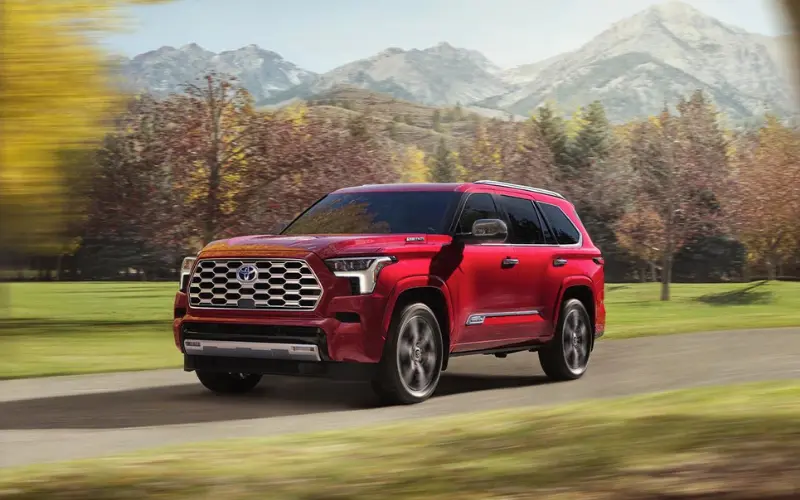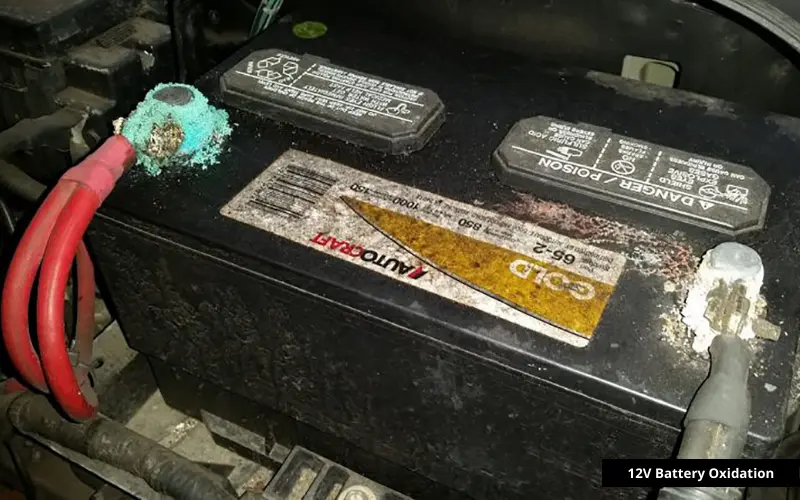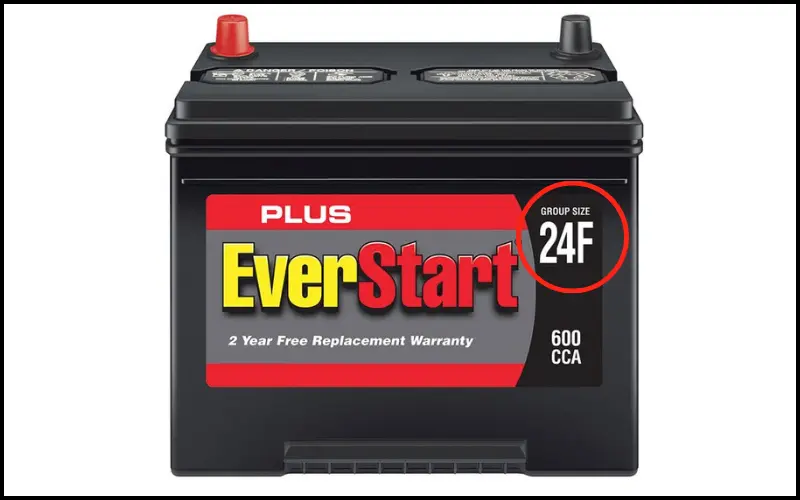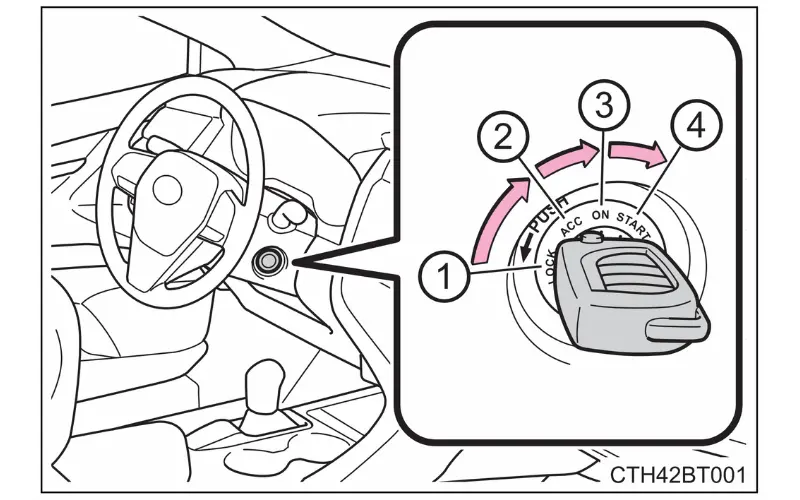An engine needs three things to start — Compression, Spark, and Fuel.
There could be one of the 13 reasons why your Toyota Sequoia won’t start.
This article will go over each reason step-by-step to diagnose and fix the issue.
By the end of this article, you will find the root cause why your Sequoia isn’t starting, and we will have a working solution.

Is Your Sequoia in “P” (Park)?
Toyota has implemented a safety feature in every Sequoia. The SUV won’t start unless you put the gear into “P” (Park). If your gear lever is in D (Drive), R (Reverse), or N (Neutral), your Sequoia won’t start.
It sometimes happens for many of us. We come to a full stop and turn off the engine before placing our SUV into PARK. As the Toyota Sequoia has an engine brake, our SUV won’t move even when not in “P” (Park) while the engine isn’t running.
To start the engine, press the brake pedal and move the gear lever to “P” (Park). Now try starting your Sequoia’s engine. If it were, for this reason, your SUV would start without any issue.
If the gear shift isn’t the problem, let’s diagnose further.
The Sequoia has a 12V lead-acid battery. This battery lights up headlights, instrument clusters, and internal lights and helps start our SUVs’ engines.
An edge trimmer, chain saw, and generator typically have a coil starting method. We pull a cord fast to start the engine, once the engine starts, it will stay on as long as there’s oil in the tank.
In the case of the Toyota Sequoia, a starting motor is connected to the 12V battery that starts the engine. This motor draws a lot of currents (400A to 500A) within a short period.
So, first, we would look into the 12V battery.
Sequoia Starting Trick That Always Works
If you turn your SUV key and hear the engine turn a little bit but don’t start, follow this trick.
Turn the SUV key to the engine START position and DON’T LET IT GO. Hold the key at ignition. The engine will turn once and twice, and after a few seconds, your Sequoia will start.
However, please do not crank the engine for more than 30 seconds at a time. It may overheat the starter and wiring system.
This trick will always work if your SUV battery is on the verge of being dead.
Look At Battery Terminal Oxidation
Many auto technicians will tell you that you probably have a dead battery if your Sequoia doesn’t start. However, this statement isn’t accurate.
There are scenarios where a good battery will fail to start your Sequoia.
Release the front engine compartment hood and open it.

The above image shows a battery that is only a few months old. But as you can see, both the positive and negative terminals have a lot of oxidation.
The 12V battery in the Toyota Sequoia provides power or gets recharged as long as the SUV is on. Thus, it goes through a lot of stress and heat.
As it is a lead-acid battery, the terminal deposits a lot of oxidation material, preventing proper electrical connection to the starter motor. It also prevents recharging the battery properly.
Thus, this oxidation creates two problems. It prevents the starter motor from getting sufficient current and the alternator from recharging the 12V battery. It’s another reason why your Sequoia engine isn’t starting.
If your 12V battery terminal in the Toyota Sequoia has a lot of oxidation, it needs a good cleaning.
To clean it properly, please take a wire brush (which we typically use to clean our BBQ stove) and kitchen tissue. We don’t need any liquid to clean the terminal.
Open both the positive and negative terminal from the battery —clean everything, including the electrical clamp, with the wire brush.
As the battery had a lot of oxidation, the probability is your 12V battery has a very low charge. Thus, please try the engine starting tips we described above.
Check the 12V Battery Wiring
The Toyota Sequoia’s 12V battery wiring is very flimsy. The terminal corrodes over time due to moisture. It can cause electrical connectivity issues, preventing your Sequoia from starting because it can’t SUVry enough current to the starter motor.
Please check the wiring status by pulling it a little bit. Sometimes, these wires come loose and are the source of the problem and your Sequoia won’t start.
Sequoia’s 12V Battery is End of Its Life Cycle
The 12V battery cranking amps deteriorate over time, causing a lack of power to start the engine. It might have enough ability to run accessories like headlights, emergency flashers, dash, radio, etc. but not enough power to crank the Toyota Sequoia’s engine.
The 12V battery that every Toyota Sequoia comes from the factory has a maximum of 24 months life period. Sometimes, it may last a little bit longer. However, owners who live in colder climates will see a shorter lifespan from these batteries.
If the 12V battery in your Sequoia is more than 24 months old, it’s better first to test the battery voltage status to determine the battery’s health.
Please remember that the 12V battery is 24 months old doesn’t mean your battery is bad. Some batteries that Walmart sells can last up to 36 months.
We need a voltage meter or multimeter to check the battery’s health. You can purchase these from Walmart.
A healthy battery on a Toyota Sequoia should have 12.6V when the engine isn’t running.
Please don’t test the battery immediately after turning it off. Sometimes, these batteries will take charge from the alternator but slowly discharge. Thus, if you check the battery voltage immediately after turning off the engine, you will get a false reading.
If you are in a situation where getting a multimeter isn’t possible, here’s an easy check.
Turn your SUV key to the electrical ON position but don’t start the engine.
Now turn on headlights, dome lights, and emergency lights. If everything is working, then your 12V battery isn’t entirely dead.
Now, start the wiper. If it works sluggishly, the 12V battery has a very low state of charge.
The only solution is to buy a new 12V battery for your Toyota Sequoia. We highly suggest you buy a battery with a 36-months warranty (Available at Walmart).
Sometimes, you can save some money on batteries with a 12-months warranty. Please don’t buy these. The 12 months battery warranty (at Walmart) means these batteries will last 12 months.
In the meantime, jump-start your Sequoia. For this, you need another working SUV battery. If nothing is available at your disposal, please call the towing service.
After you start your Sequoia, please directly drive to Walmart or AutoZone and buy a 12V battery.
Check the Battery Group Before Replacement
Different Toyota takes different battery group batteries. When you need a new battery for your Toyota Sequoia, please buy the correct battery.

The 12V battery will show the battery group number. Here are some examples,
- 24F
- 34N
- 78N
- H7 etc.
Serpentine Belt is Old
A generator (Alternator) in the Toyota Sequoia makes electricity and recharges the 12V battery.
However, this alternator isn’t directly connected to the engine shaft. But it is indirectly connected through a rubber belt known as the serpentine belt. This belt drives the alternator, AC compressor, and water pump.
Over time this belt becomes stressed and fragile. Thus, it can’t tightly rotate the alternator to produce enough electricity.
As a result, the Sequoia’s 12V battery can’t charge properly which is another reason why your Sequoia won’t start.
If the serpentine belt is old and has cracks, there’s a possibility that the SUV battery and alternator are in good condition. But as the belt fails to rotate the alternator shaft properly, the alternator isn’t producing enough power to recharge the 12V battery in the Toyota Sequoia.
Thus if this is the case, please change the serpentine belt.
The belt costs around $30. However, with labor, the total replacement cost could be up to $120. But if you are handy, you can change the serpentine belt yourself. There are a lot of youtube tutorial videos.
Starter Motor May be Dead
The starter motor rarely goes bad. These motors can last a very long time.
If you can jump-start your Sequoia, your Starter Motor is in good health.
If you turn on the key and only hear a metal “click click click” sound, the probability is the starter motor has gone bad, and it’s why your Sequoia engine isn’t starting.
Unfortunately, if the starter motor is bad, you can’t start your Sequoia’s engine. You must take your Sequoia to the Toyota service center or an experienced auto mechanic shop.
Changing the starter motor on a Toyota Sequoia typically costs $350 to $450.
Alternator Issues
Alternators rarely go bad. Thus, before changing the alternator, please diagnose the SUV further.
If the alternator has problems, it will fail to recharge your 12V onboard battery, indirectly preventing your Sequoia engine from starting.
The alternator diagnosis is straightforward.
If you can jump-start your Sequoia, don’t turn off the engine. Take a voltage meter and read the battery voltage while the engine is ON. The voltage should be more than 13.5V. If it’s not, your alternator has issues.
If your Sequoia’s battery is not old, the battery terminal is clean, the serpentine belt is not cracked, and you started the Sequoia a few days ago, the probability is the alternator may be faulty and needs replacement.
Changing the alternator is very costly. At a Toyota service center, it would cost up to $900 with parts and labor to replace the alternator for a Toyota Sequoia.
Bad Fuel Pump
The fuel pump can get clogged or get bad. If it fails, your Sequoia will not have enough fuel pressure to turn on the engine. Do the following steps to check whether the fuel pump is good or bad.

Turn the SUV key to the ON position and wait 3 seconds. Then turn the key to the LOCK position. Do this three times. When you turn the key to the ON position, there should be a whirring sound. Now, try to start the engine.
If your SUV fails to start, determine whether you heard a whirring sound while keeping the key in the ON position. If you heard it, the fuel pump might be working perfectly, and the problem is somewhere else. Otherwise, the fuel pump may have failed.
Blown Out Fuse
There are two fuse boxes in a Toyota Sequoia.
One is inside your vehicle on the driver’s side below the steering wheel column. This fuse box controls all the electronics that are inside your Sequoia.
The second fuse box is in the engine compartment and controls all the electronics outside your SUV, such as headlights, turn signal, starter motor, alternator, etc.
The alternator current goes through a fuse before reaching the 12V battery. If the alternator for some reason produces a sudden power spike, the fuse would blow and stop recharging the 12V.
The starter motor circuitry is also connected through a fuse. If, by any chance, the starter motor tries to draw more current than required, the fuse will cut off.
In both of these scenarios, your Toyota Sequoia won’t start.
Please check the fuse box that is inside your Sequoia. When you open the fuse box cover, there is a diagram that outlines which fuse controls what. Check the alternator and starter motor controller fuse. If it’s blown, replace it with a similar amperage fuse.
Spark Plug Issues
Toyota Sequoia has 4 iridium spark plugs. These spark plugs last up to 120,000 miles.
If not changed at regular intervals, the spark plug can get damaged and prevent your Sequoia’s engine from getting started.
Please don’t use a platinum spark plug. These don’t last very long.
Moreover, always change the spark plug from a trusted auto mechanic shop or Toyota service center.
We also suggest you not buy spark plugs off Amazon. Amazon is full of fake spark plugs which can damage your engine.
Rare Scenario
In some rare scenarios, a broken ignition switch, clogged fuel filter, malfunctioned key or onboard immobilizer can prevent your Sequoia from starting. However, these aren’t common.
Check the OBD Codes
If you have an OBD scanner, connect it to the OBDII port in your Sequoia. Every Sequoia has a sophisticated computer system that logs every error code.
As your engine isn’t starting, the onboard computer has already logged an error code which will tell you at what point the engine failed to start and what the problem is.
You can buy an OBDII scanner from Walmart, NAPA, AutoZone, Amazon, or other auto shops.
It’s a handy tool for diagnosing SUV issues.
Toyota Sequoia Cranks But Not Starting
If your Toyota Sequoia cranks but does not start, it means your 12V SUV battery has a low charge. There’s an easy trick to start the engine in this scenario.
Keep your SUV key on the engine start position, and DON’T LET GO. The engine will crank once, twice, and after a few seconds, the engine will start.
The 12V battery charge can drain overnight for several reasons. One reason is cold weather.
Every battery has a phantom drain (The battery slowly discharges by itself). On cold days, it gets worse.
If your 12V battery is 24 months old, please change the battery immediately.
Can I Start My Toyota Sequoia With My Phone?
Every Toyota Sequoia has all the necessary hardware to start and stop the engine remotely through the Toyota Mobile App.
However, this feature isn’t free. You must subscribe to the “Remote Connect” subscription from the Toyota website, which costs $8/month or $80 if you pay for 12 months.
With a new purchase of every Sequoia, Toyota, however, gives one year free trial of “Remote Connect.”
With your mobile phone and “remote connect” subscription, you can do the following things:
- Vehicle Status Alerts: Gives status of your Sequoia’s doors, windows, odometer, and fuel level.
- Vehicle Finder: Gives you the last known parking location of your Sequoia.
- Vehicle Control: Lock/Unlock Door.
- Remote Start: Start and Stop the Sequoia engine remotely via the mobile app.